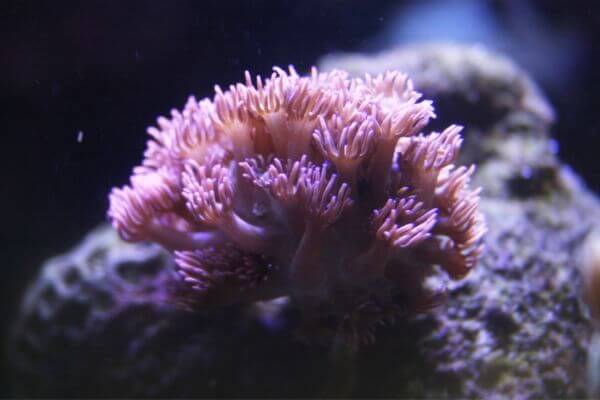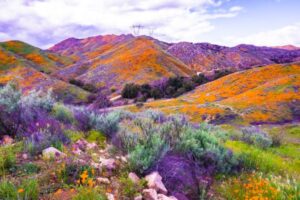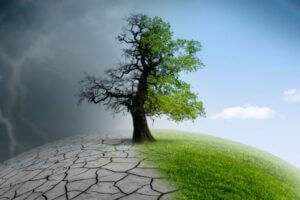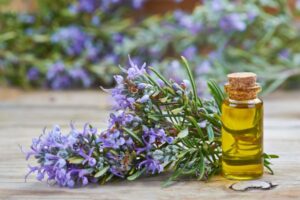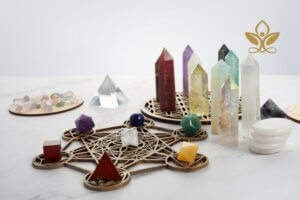Sea and Corals literally popped into my mind as I was wondering what to write about today. I love the ocean and don’t get there often enough. It disturbs me deeply that the coral reefs are among the earthly treasures that we as humans are destroying. What’s more, they are an essential piece of Mother Earth’s ecosystem. Moreover, they are indeed necessary for no less than our very survival.
After doing a little research, I curated information about the virtues of the coral reefs of the sea and the rapid decline of the coral reefs around the world. If this is a topic that speaks to your heart, we invite you to continue reading to learn more about the corals of the sea and the beauty and perils that surround them in our modern world.
Corals of the Sea • The Beauty and the Perils
Ions and harmony for increasing endorphins.
The effect of the sea and corals on the human mind is one of elated harmony. First, this happens because ions play a significant role in the way we feel when we are near the ocean. When I drive over from Salem to the coast, I can immediately tell when I’m getting near the water. Amazingly, this positive effect of the sea is caused by negative ions that blow in from the ocean! However, you can get this same effect by walking in the woods or taking a big breath of fresh air after it rains.
Part of the euphoria is simply being around these wondrous settings and away from the normal pressures of home and work. Yet, the air circulating in the mountains and the beach contains tens of thousands more negative ions. This is far more than the average home or office building, which contains dozens or hundreds, and many register a flat zero.
Here’s how they work. To begin, seaspray is overflowing with negative ions. But, they are tasteless, odorless, and invisible. Next, negative ions reach our bloodstream and produce biochemical reactions. According to an article on WebMD, negative ions improve our body’s ability to absorb oxygen. Most importantly, negative ions neutralize damage caused by “free radical” ions. Amazingly, the reactions produced by negative ions increase levels of serotonin. This helps reduce depression, relieve stress, and gives us a quick lift.
While part of the euphoria is simply being around these wondrous settings and away from the normal pressures of home and work, the air circulating in the mountains and the beach is said to contain tens of thousands of negative ions — Much more than the average home or office building, which contain dozens or hundreds, and many register a flat zero.
VIA WebMD
Ion therapy is a real thing.
Michael Terman, Ph.D., is a researcher at Columbia University in New York. And Dr. Terman is a Professor of Clinical Psychology in Psychiatry at the College of Physicians and Surgeons. He has much to say about the positive impact of negative ions. Along with his wife and collaborator, Jiuan Su, Ph.D., they are pursuing research to discover ways that negative ions can be used as therapy. Here is what Dr. Terman’s homepage on Columbia University’s website Columbiapsychiatry.org says:
“his research has followed a triple track: photobiology and circadian rhythms in animal models, clinical chronobiology and light and ion therapy for depressive disorders, and instrumentation development for chronotherapeutic”
Michael Terman, PhD, Columbia University Department of Psychiatry
An article on WebMD titled “Negative Ions Create Positive Vibes” quotes Dr. Terman saying that the pounding waves of the beach surf release the same negative ions as a spring thunderstorm. He claims that being next to crashing waves or near a thunderstorm, people commonly report feeling lighter moods.
What are corals and why are they important?
Corals are living organisms made of calcium carbonate. An individual coral organism is less than the size of 1 inch. But, a colony of coral polyps will grow together and create the massive structures you see in oceans. A massive colony of coral organisms is a coral reef. These marine structures can stretch for miles.
The National Oceanic and Atmospheric Administration (NOAA) says there are many species and shapes of coral. They list many species of coral including those shaped like a fan and others identified as sea whips. Organisms with hard polyps are known as “stony” coral. These hard corals are the foundation for coral reefs. There are other coral species that do not have hard surfaces. Some species of corals are soft and flexible like other underwater plants. You can find coral in oceans all around the world. You can find large coral reefs in tropical waters. This is based on an article by Live Science.
“Coral reefs, the rain forest of the ocean, are home to one-third of the species of the sea. Coral reefs are under stress for several reasons, including warming of the ocean, but especially because of ocean acidification, a direct effect of added carbon dioxide. Ocean life dependent on carbonate shells and skeletons is threatened by dissolution as the ocean becomes more acid.”
James Hansen
How do corals of the sea grow? Very slowly!
They grow by feeding on algae and bacterioplankton that are present in the ocean. Also, to feed, corals use small tentacles which act as arms to catch the algae floating around in the ocean. In addition to eating algae, corals eat the exoskeletons from layers of dead coral. Furthermore, each generation of coral grows directly on top of the older ones creating a bigger and bigger structure.
Interestingly, the NOAA categorizes coral as an animal as opposed to a plant. This is because coral does not produce their own food. Therefore, they must survive by feeding on the natural resources flowing through the ocean.
“Coral reefs are formed when free-swimming coral larvae attach to submerged rocks or other hard surfaces along the edges of islands or continents. As the corals grow and expand, reefs take on one of three major characteristic structures — fringing, barrier, or atoll.”
—Via NOAA
Corals grow very slowly. In fact, an article by the National Ocean Services puts the average rate of growth for coral at a speed of two centimeters a year. However, there are a few species that can grow up to twice as fast given the right surrounding conditions.
Why are coral reefs of Mother Earth important?
NOAA estimates that there are a million species of undiscovered sea organisms living around every colony of coral reefs. Each coral reef system is a unique ecosystem within itself.
Mother earth’s coral reefs are crucial to the health and balance of the earth’s oceans. The National Ocean Service’s website explains the importance of ther earth’s coral reefs in great detail. Here are just a few of the reasons:
- Each coral reef produces a marine environment that supports over 4,000 species of fish and other sea life.
- They contribute greatly to the life cycle of half of the federally managed fisheries. If coral reefs become unhealthy, commercial fisheries will suffer.
- New drugs now in development produced from coral reefs. These drugs can treat illnesses caused by certain viruses, arthritis, bacterial infections, and cancer.
- Coral reefs are responsible for billions of dollars in revenue. This is a result of a large amount of tourism and the fishing industry that develops near coral reefs. Of course, hotels and restaurants also benefit from this cycle of commerce.
- Coral reefs block a large amount of the energy of ocean waves hitting shorelines. This helps prevent shoreline erosion and property damage.
“Coral Reefs are under assault. They are rapidly being degraded by human activities. Over-fished, bombed, and poisoned. They are smothered by sediment and choked by algae growing on nutrient-rich sewage and fertilizer run-off. They are damaged by irresponsible tourism and are being severely stressed by the warming of the world’s oceans. Each of these pressures is bad enough in itself, but together, the cocktail is proving lethal.”
Klaus Topfer
The peril of the Great Barrier Reef.
Australia is home to the largest coral reef structure in the world. In fact, according to Barrierreef.org, the Great Barrier Reef measures 1,500 miles in length. Alternately, other sources such as LiveScience.org give measurements for the Barrier Reef of more than 1,600 miles. That’s equal to the distance between Boston, MA, and Miami, FL! Not surprisingly, the Great Barrier Reef is one of the 7 wonders of the world. It is the largest reef on earth and the largest living structure on earth. Australia’s Great Barrier Reef can be seen from space.
It is so saddening but also perilous to life on Mother Earth that the Great Barrier Reef is in serious decline. Barrierreef.org lists a few environmental factors contributing to the decline in the list below:
- Rising water temperatures threaten the barrier reef. Rising water temperatures are a direct result of global warming.
- Secondly, deteriorating water quality presents a threat. The deteriorating water quality is a consequence of pollutants contained in local run-off.
- Lastly, outbreaks of coral-eating fish species threaten the Great Barrier Reef. Species include starfish and crown-of-thorns.
Sir David Attenborough is a broadcaster and historian from England. He is well-known for his work with the BBC’s Natural History documentary series. In 2015, Attenborough fronted a series on Australia’s Great Barrier Reef where he stated the following:
“It is one of the greatest and most splendid natural treasures that the world possesses.”
Sir David Attenborough
Reef & Rainforest Research Center
Some good news has come to my attention about the magnificent Great Barrier Reef. It turns out it is showing some signs of improvement. This is thanks to its built in resiliency. Please see the excerpt below VIA IFL Science.
The Reef & Rainforest Research Centre (RRRC), a non-profit organization, has published a report for the Queensland State Government that claims parts of the GBR are showing some “signification signs” of recovery from years of bleaching.
Don’t crack out the champagne just yet, though – the future of the world’s largest coral reef (or any coral reef, for that matter) is still not looking rosy. At all.
While scientists and policymakers have been working hard to support the reefs, this recent development is primarily thanks to a milder 2017-18 summer. The welcoming weather has allowed parts of the reef to regain some of its health following the catastrophic bleaching events of 2016 and 2017, but all it takes is another bad season and it’s back to square one.
“Saxon Reef, for example, suffered some form of bleaching on 47.1 percent of its live coral cover during the 2016 event. Fortunately, much of the bleached coral recovered thanks to better conditions experienced in 2018,” Sheriden Morris, RRRC Managing Director, said in a statement.
“However, this recovery is always going to be contingent on environmental conditions.”
VIA IFL Science
How you can help the sea and corals.
According to barrierreef.org, 75% of the coral of the sea around the globe are in danger. Climate change is the biggest threat facing our coral reefs. Other threats imposed by surrounding communities. The survival of these reefs are important to the survival of mother earth. This is a problem we must face together.
A Global Program called the Resilient Reefs Initiative exists to help. It is a foundation spearheading the charge to help build reefs resiliency. The foundation has reef managers and entire reef communities who are helping coral reef systems adapt to climate change.
“Half of the coral reefs are still in pretty good shape, a jeweled belt around the middle of the planet. There’s still time, but not a lot, to turn things around”
Sylvia Earle, Oceanographer
If you would like to learn more about how you can help prevent this disaster from continuing, click here. If you know of other coral reefs around the world that are in peril, use the contact form on this site to send the reference links to me. Thank you in advance for caring enough to share your information with me and the rest of my readers.
Resources for this post.
- Live Science.com
- National Ocean Service
- BBC – Future Planet
- National Oceanic and Atmospheric Administration
- Great Barrier Reef Foundation
- Barrier Reef
Conclusion
It is our wish that you find this post enlightening and helpful. If you have any questions or suggestions, we love to hear from you in the comments below. Also, kindly accept our invitation to join our group on Facebook to surround yourself with kindred spirits and post your encouraging messages.

